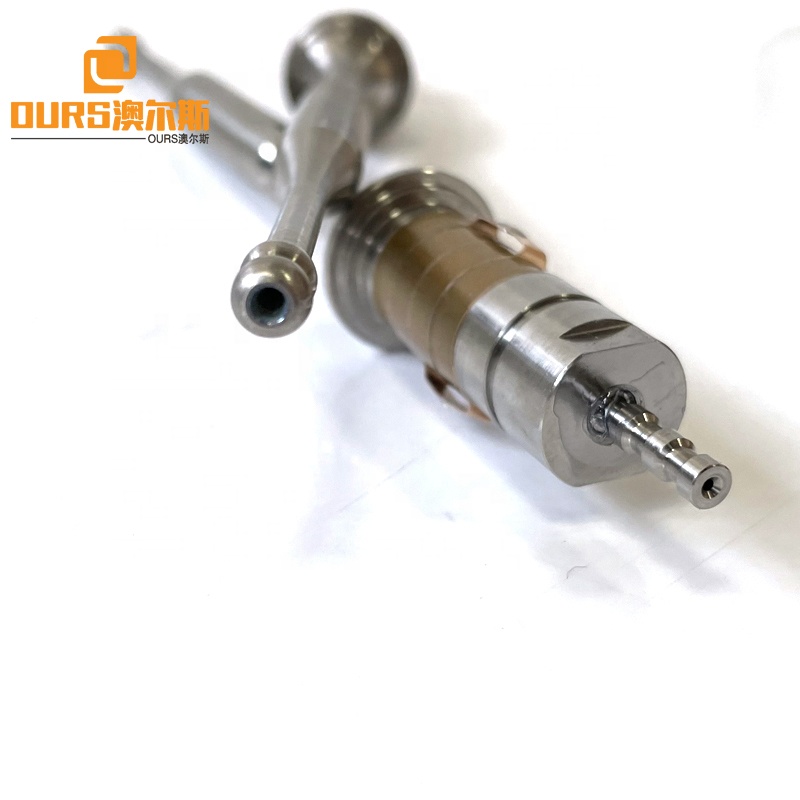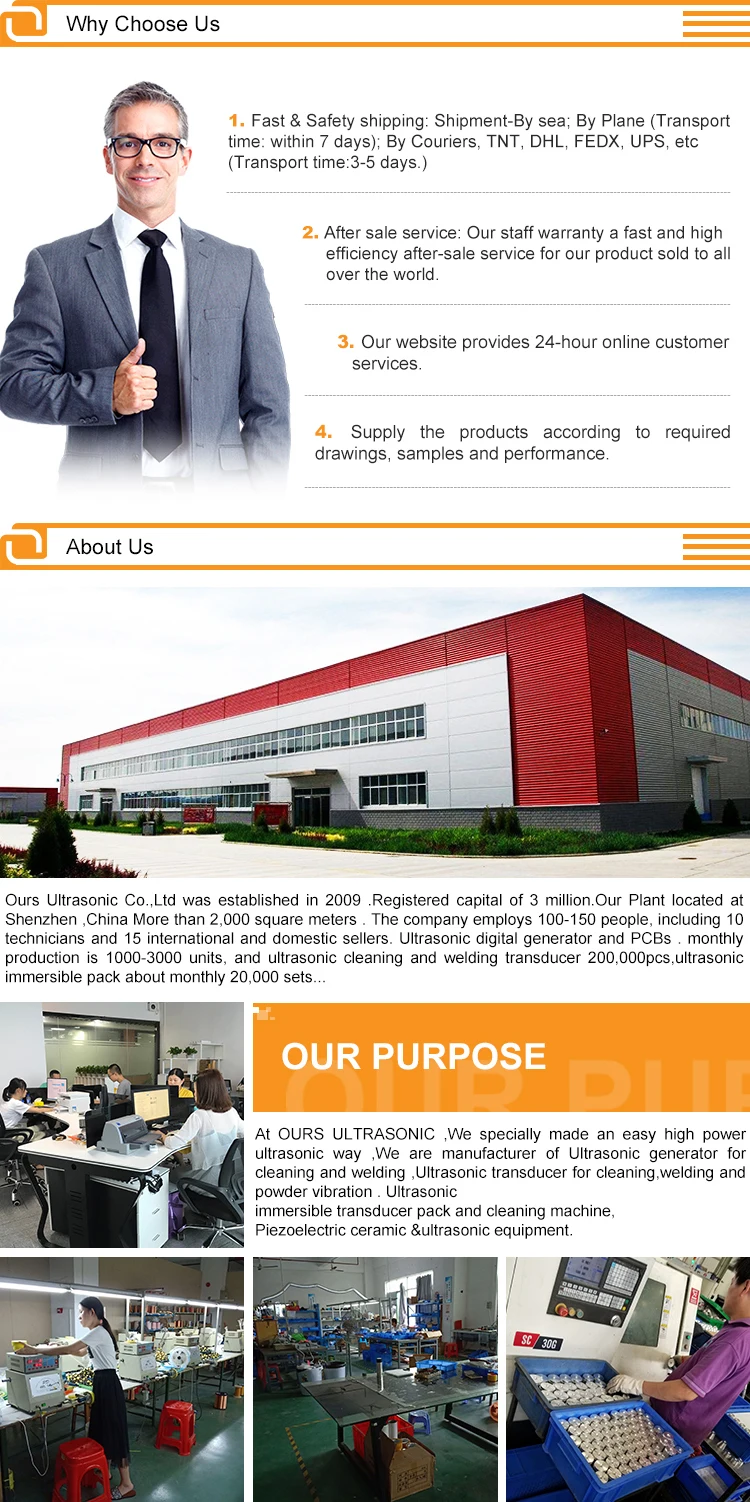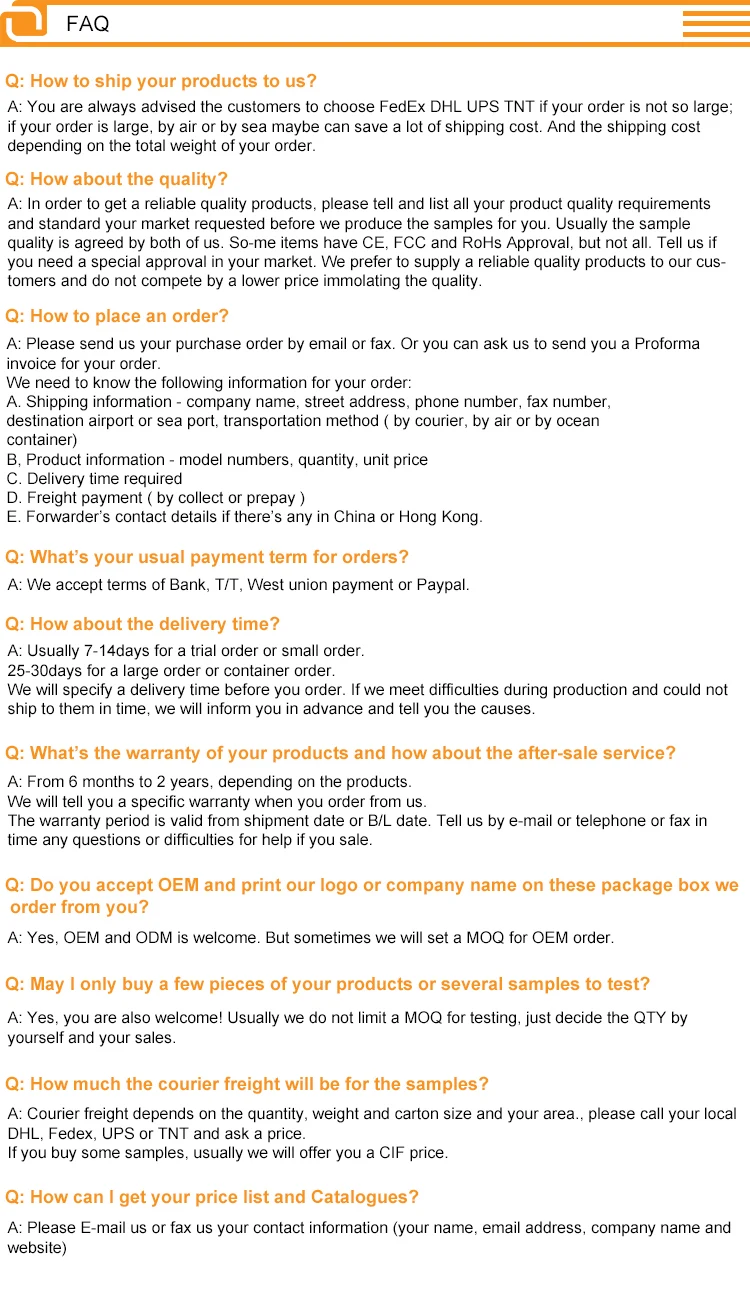
1-9 Pieces
$350.00
≥10 Pieces
$330.00

The ultrasonic nozzle contains a piezoelectric transducer, and when energized, the ultrasonic nozzle vibrates at a high frequency. The design of these transducers causes the nozzle to vibrate longitudinally, so the tip of the nozzle vibrates with up and down motions thousands of times per second. When the thin film liquid is applied to the tip of the ultrasonic nozzle, capillary waves are formed. The amplitude of these waves can be easily controlled by the ultrasonic generator and increase the amplitude to the point where the vertical capillary waves become too high to support themselves. Due to the continuous excessive extension of these standing waves, the material was abandoned, and highly uniform droplets of micrometer size began to form. Under the right conditions, atomization can last a long time.
Principle:
Ultrasonic nozzles use piezoelectric transducers to convert high-frequency sound waves into mechanical energy to perform longitudinal high-frequency vibration. This longitudinal upward and downward movement generates standing waves in the applied liquid film at the tip of the ultrasonic nozzle, and the amplitude of these waves can be Controlled by the ultrasonic generator. The liquid waves extend upward from the tip of the ultrasonic nozzle until they are separated into droplets of uniform size and almost no kinetic energy. The secondary molding gas or surrounding air can easily wrap the droplets to the required shape and speed to achieve various spraying.
The main advantages of ultrasonic spraying are:
1. High coating uniformity
The uniformity of the distribution of liquid particles atomized by the ultrasonic nozzle is significantly higher than that of the two-fluid nozzle, which is commonly known as the air spray gun, so that the uniformity of the coating after spraying by the ultrasonic nozzle is improved. Under normal circumstances, the uniformity of the coating of ultrasonic spraying can reach more than 95%.
2. High raw material utilization rate, less splash
Since ultrasonic spraying is liquid atomization by ultrasonic oscillation, the process of coating atomization does not require any gas, that is, the atomization process does not require pressure, and only a very low carrier gas pressure is applied to transport the liquid mist after atomization. It greatly reduces the liquid rebound and splash caused by the two-fluid spraying high-pressure air, thereby greatly improving the utilization rate of the coating. The raw material utilization rate of ultrasonic spraying is more than 4 times that of ordinary air spraying, and the utilization rate can reach more than 90%.
3. High precision of coating thickness control
The main factor affecting the accuracy of the coating thickness is the spraying flow rate of the coating, which is the amount of material loaded on the substrate per unit time. The ultrasonic nozzle has no pressure effect on the liquid, so the flow rate of the sprayed coating liquid can be completely controlled by the high-precision metering pump, thereby realizing high-precision spraying flow control. For example, a high-precision syringe pump has a flow control accuracy of up to picoliters per second, and the micro-channel design of the ultrasonic nozzle can also achieve the overall control accuracy of nanoliters per second.
4. The coating thickness is thin, up to tens of nanometers
Since the spray volume of the ultrasonic nozzle can achieve a very low stable flow rate (0.001ml/min), it can achieve a very small amount of loading on the substrate, thereby realizing a very thin dry film. For some nanomaterials, the dry film thickness can be as low as tens of nanometers. It can be used to prepare glass films such as transparent conductive film, antireflection and antireflection film, heat insulation film, hydrophilic and hydrophobic film.
5. The nozzle is not clogged and the maintenance cost is low
Since the ultrasonic nozzle achieves liquid atomization through ultrasonic oscillation, and the atomized particles are determined by the ultrasonic oscillation frequency, it is different from the two-fluid nozzle. The nozzle aperture does not need to be small to achieve fine atomized particles, so it reduces The risk of nozzle clogging is eliminated.
The use industry of ultrasonic spraying
Blood collection tube
Medical equipment
Hydrogen fuel cell
Solar cell paint
Antibacterial coating
Float and flat glass
electronic product
nanotechnology
Ultrasonic spray pyrolysis
Bioaerosol spray













Scan the QR code with your phone, or visit the URL
- 506B,Dazhong industry park,sanhe ,DaLang street,longhua district,ShenZhen China
- 86-13662219669
- [email protected]